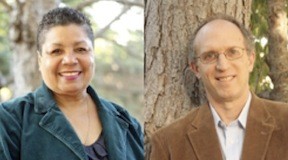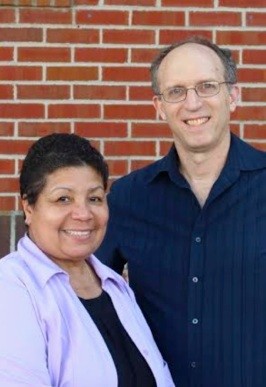How educators are using the Question Formulation Technique in STEM lessons around the country and world.
By Chris Orchard
Students in Alyssa Park’s fourth-grade class had a pressing question about isopods. Specifically, “Do they poop?”
To refresh your memory, isopods are “small sessile-eyed aquatic or terrestrial crustaceans with the body composed of seven free thoracic segments each bearing a pair of similar legs.” A pill bug, a.k.a. “roly-poly,” is a common land-based isopod.
The fourth-graders’ questions didn’t end there: “Do boys have babies?” “How do they roll up?” “Do they see the future?” “What do they eat?” “How big can they get?” “Do they have superpowers?” “Do they have a nose?” “How do you tell the difference between males and females?”
Using the #QFT to set us up for a science inquiry into isopods pic.twitter.com/MOMv9ZpDSb
— Alyssa Park (@MissParkSES) October 30, 2017
They probably didn’t appreciate how momentous their accomplishment was.
In a matter of minutes they had asked key questions about reproduction, nutrition, growth, movement, sensitivity, respiration and, yes, excretion: each of the seven life processes.
Teachers like Alyssa Park amaze us on a daily basis with how effectively they use the Question Formulation Technique to kindle curiosity while pursuing specific learning goals.
Educators often reach out to us on Twitter (@RightQuestion) in order to exchange ideas related to student questioning – conversations we value greatly. There’s not enough space to share every Tweet, but here are a few examples of excellent work conducted around the country and world, with an emphasis on STEM subjects. (See this earlier post for a Twitter roundup with social studies examples.)
Tish Mullen, a high school science teacher at Sandpoint High School in Idaho, confronted her students with a philosophical Question Focus: “Science is a way of understanding.”
2nd try w/? Formulation Technique from @RightQuestion . QFocus: "Science is a way of understanding". This group's ?s were amazing! pic.twitter.com/8LPFaHaYjh
— Tish Mullen (@tish_mullen) October 17, 2017
Her students asked some thought-provoking questions: “Is science more harmful than useful?” “In what way can we use science to understand?” “What tools do we need to understand science?” “What was life like before we understood?” “Understanding what?”
Mandy Cleland’s eighth-graders in Ontario might offer a down-to-earth response.
Her class took a trip to Greenhouse Academy, which gives students hands-on experience growing plants and running a business. To prepare, she presented them with photos of Greenhouse Academy’s facilities.
#QFT @SummersCorners in preparation for our trip to @GHAThorndale. So many great Q’s. Students excited to explore answers. pic.twitter.com/pFeHU0pUyc
— Mandy Cleland (@MandyCleland1) October 26, 2017
Here are some of their questions: “What is this building’s purpose?” “What kind of plants are these?” “Is it” – the item depicted in the photo – “a water pump?”
Later in the week Cleland’s students figured out how to maximize productivity in the greenhouse. Some decided to write a poem comparing the experience to normal classroom learning: “At least bedrock, gravel and sand don’t make you raise your hand,” they observed.
An awesome poem about #GHA written by @SummersCorners today! #greenhouse #learningisfun @HollyPoetry pic.twitter.com/MusHGeCqSR
— Greenhouse Academy (@GHAOntario) November 3, 2017
In Sandston, Virginia, Erin Pratt’s middle-schoolers considered a Question Focus close to home: “Henrico County’s 600 buses burn approximately 1,000,000 gallons of diesel fuel, a nonrenewable energy, each year.”
Her students asked incisive questions: “Why can’t buses use solar energy?” “Are there buses that run on different fuel?” “Who makes diesel fuel?”
Ss produced some very thoughtful questions about our buses & the energy that powers them @ElkoMiddle @HenricoSchools @Henrico_ITRT #qft pic.twitter.com/wrXmWG0vZ3
— Erin Pratt (@Pratt_ITRT) October 25, 2017
In Minnesota, high school students in Marlene Schoeneck’s environmental science class, a college-level course, asked tough questions about the water crisis in Flint, Mich.
“Did they know the water was toxic before the water system was switched over?” “What is considered ‘healthy levels’ of lead?” “Why is Flint such a poverty stricken area?” “How has the water been treated now that the problem has been identified?”
CIS Environmental Biology used #QFT to come up with nifty questions on the Flint, MI water crisis. @RightQuestion . https://t.co/jTqGFoUsmt
— Marlene Schoeneck (@maschoeneck) October 18, 2017
Since we’re discussing potential hazards to people’s health, Christine Murphy presented an ominous Question Focus to her seventh-grade class in Hyde Park, N.Y.: “Many people live and farm on volcanoes.”
Finally a science #QFT for my students. @RightQuestion #NGSS #questionmore #middleschoolscience pic.twitter.com/ObRudk4D1V
— Christine Murphy (@MurphyHMS) September 20, 2017
Not surprisingly, a handful of students asked the same question: “Why do people live on volcanoes?”
Murphy added a useful activity to the process of prioritizing questions. She made two push-pin boards. One was labeled “driving questions,” the other “question parking lot.” This allowed students to pin their top questions to the “driving” board without totally discarding the others, many of which were insightful.
Some other driving questions were, “Does it make a difference if you farmed on a volcano than on the ground?” And, “What happens if the volcano erupts?”
Ss were excited to see their Driving Qs and Parking Lot Qs up on the board. @RightQuestion #QFT #NGSS #middleschoolscience #questionmore pic.twitter.com/wVR3mriM05
— Christine Murphy (@MurphyHMS) September 28, 2017
The Question Formulation Technique has now spread to more than 130 countries, and in South Africa Ms. Barzottini showed students some geometric shapes and figures. “Are the shapes similar or congruent?” they asked. “Why do the triangles look the same, but the numbers are not the same?”
Bringing the QFT to South Africa! @powersmart2 #qft pic.twitter.com/lbZJOQSJvr
— Ms. B (@miss_barzottini) October 18, 2017
Suzy Zellmann, in Wisconsin, used the Question Formulation Technique with high school students in her AP Research group, helping them plan year-long research projects.
Identifying an original research question, which leads to original research, is not easy. Zellmann’s students seem well on their way to coming up with a few good ones. Here’s an example:
“What are the other functions of regions of the brain responsible for musical reasoning?”
So many thoughtful questions as students help each other narrow topics in AP Research tutorials! #inquiry #studentdriven @RightQuestion pic.twitter.com/vuySOFsyQA
— Suzy Zellmann (@szellmann) October 2, 2017
Please keep Tweeting in our direction! You can find us at @RightQuestion, and many people use #QFT, the abbreviation for Question Formulation Technique. We love hearing about your work with student questions and inquiry. Also, visit us at v1.rightquestion.org and join our Educator Network. We have more than 29,000 educators in the network and are trying to reach 30,000, so we invite you to join and share with colleagues.




Speak Your Mind